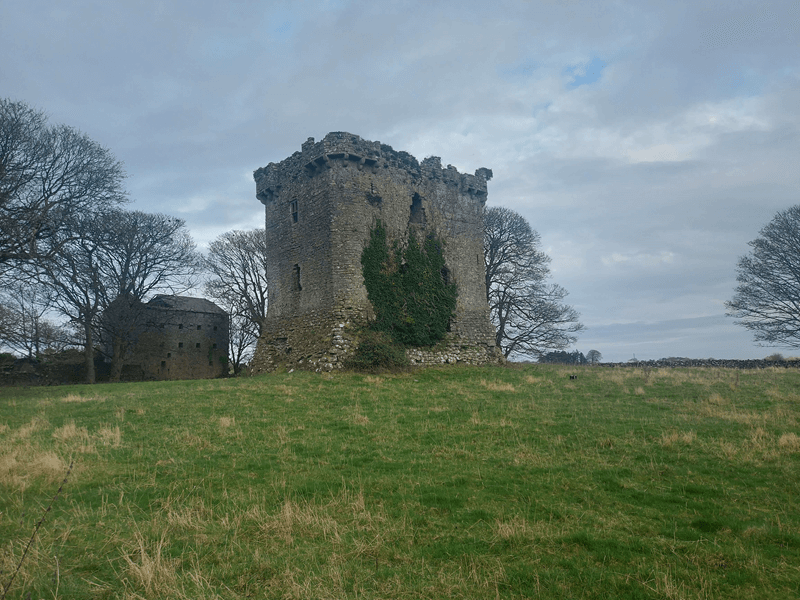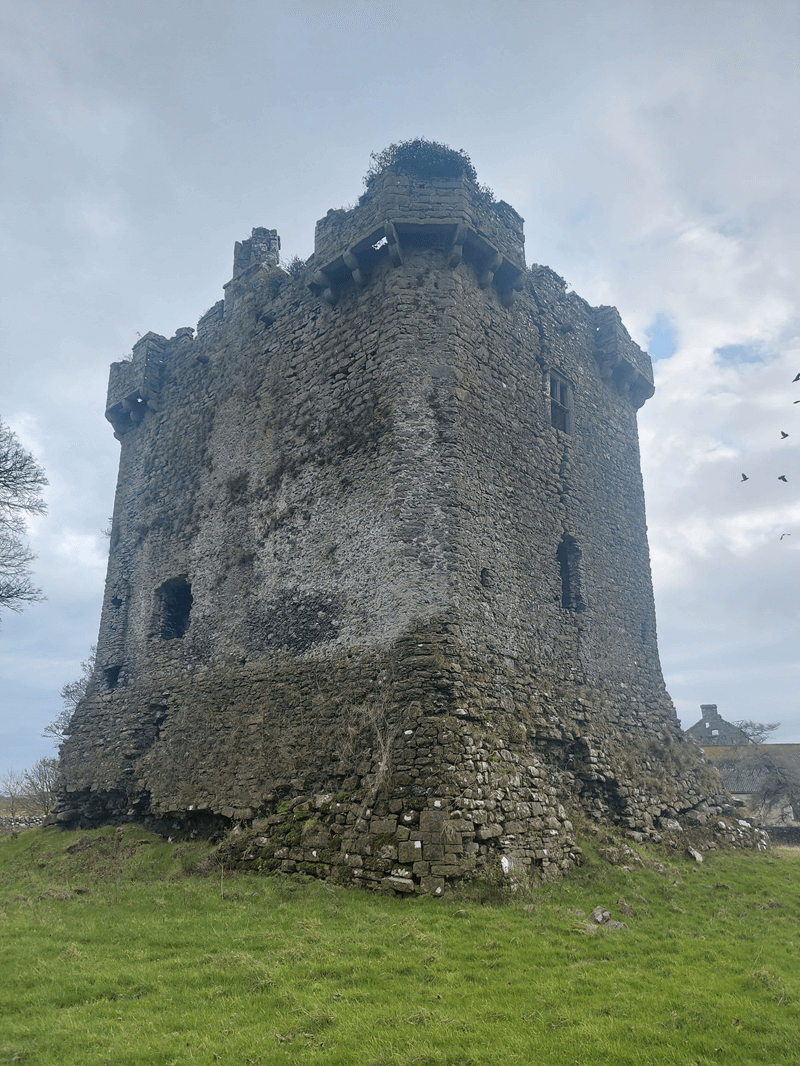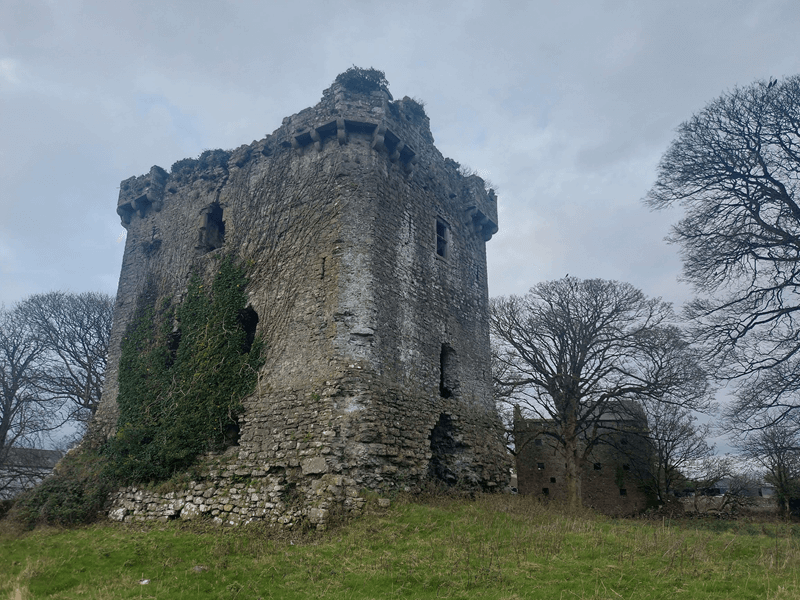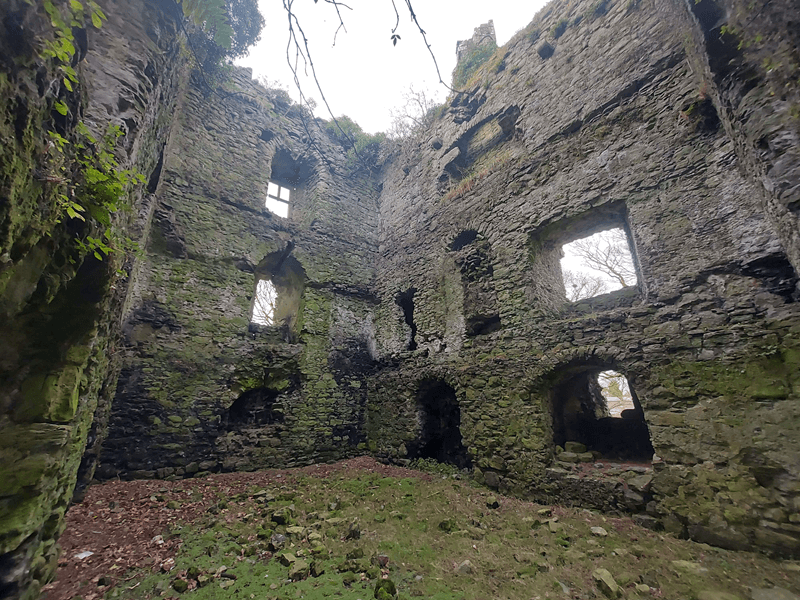History

We are very thankful to the Shrule Village Enhancement Committee [1] for the panels placed at the entrance of the site, providing detailed information about the background of the castle and the village, which is also rich of many other remarkable landmarks, that a visitor passionate about Irish history can enjoy visiting. Unless otherwise specified, we will be referring to those panels in this section.
The rectangular base gives to the castle an imposing robust structure. The height is approximately 12 meters (40 feet) and the base internally measures 10 meters (32 feet) by 7 meters (23 feet). The walls are about 2.5 meters thick (8 feet). Originally a tower house with four storeys, the bartizans we can see around the top corners were probably a later addition. What we can see today is the result of a turbulent history, whose most relevant events are narrated in the next paragraphs.
Shrule castle (in Irish Caislen Sruthair, which means ‘Castle of the River’ [2]) was erected around 1238 by the son of the Norman William de Burgh, Richard Mor de Burgh, to whom Henry II granted the Kingdom of Connacht. Located close the Black river, on an important natural crosspoint between the counties of Galway and Mayo, the purpose of the castle was to defend the new possessions in Connacht. The de Burghs (who later adopted the name Burke) where very powerful in County Mayo, as proved by the several castles they erected in Neale, Kilmaine, Moyne, Kinlough and Ballisnahyna, and in County Galway, where they had castles in Loughrea, Portumna and Headford. Actually, according to records, they also had more than 120 castles in County Clare, Kildare, Roscommon, Tipperary, Limerick, Down and Wexford.
At that time, the Irish opponents in County Mayo and County Galway were the O'Flahertys and O'Connors, who were pushed back by the mighty Burkes. As several other Anglo-Norman families, gradually the Burkes started adopting Irish habits, language and laws, also as a consequence of the intermarriages with the Gaelic clans. The same William de Burgh had married a daughter of Donnell O’Brien, King of Thomond, in 1193.
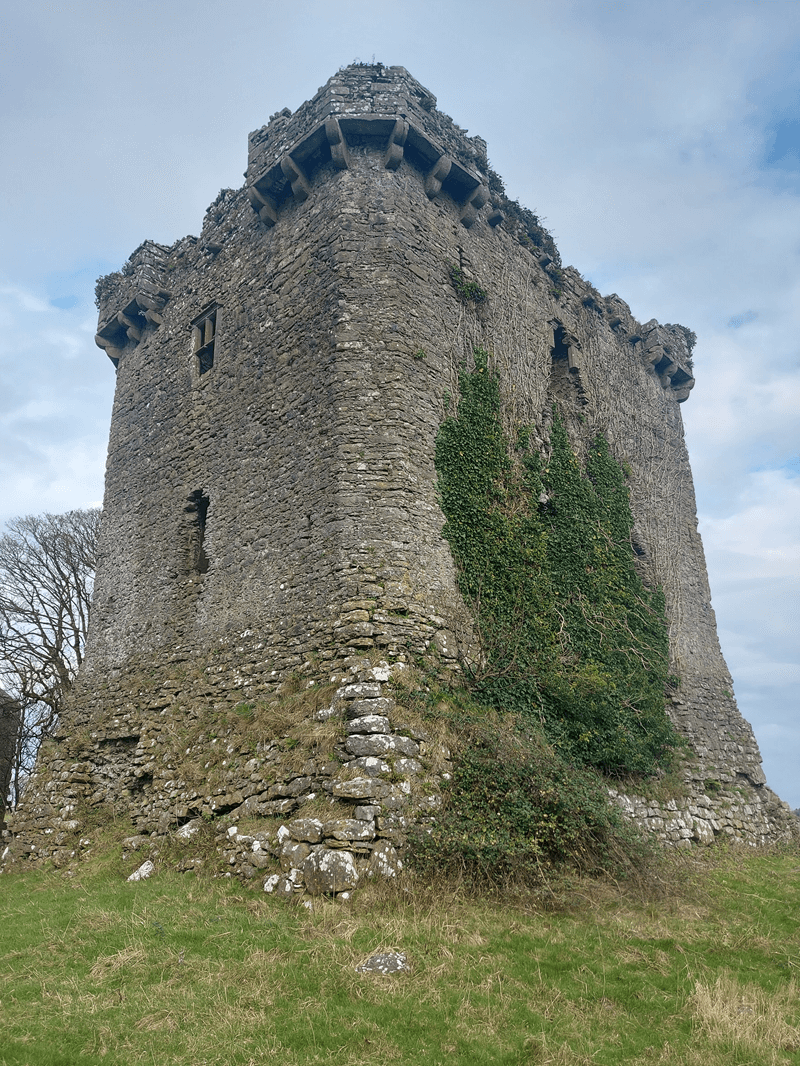 Shrule castle was the theatre of crucial events that signed the history of Ireland. One of the most noticeable was the Battle of Shrule (1570), consequent to the Thomond rebellion moved by Irish chiefs against British forces. The President of Connacht, Sir Edward Fitton, leading the crown forces, moved to Galway to seek refuge after being attacked by Connor O’Brien, 3rd Earl of Thomond, near Ennis. Once arrived, Fitton asked for reinforcement and gained the help of the Irish Lord Clanricarde, Barrett, and the MacDonnells, who joined Fitton’s army as they saw the opportunity to defeat the Burkes and gaining more power. In June 1570, Fitton put Shrule castle under siege. The day after, a fierce battle was fought, with the English and their allies defeated by the Burkes of Mayo. Fitton and his chief captain were wounded. However, after having won the battle, the Burkes left the battlefield over night, in contrast with the tradition of occupying it to seal the victory and hence Fitton claimed a draw. Later, Shrule castle was finally taken by Fitton before being entrusted to Lord Clanricarde, who got committed to guard it at his own expense. Soon after, the Burkes signed the peace.
Shrule castle was the theatre of crucial events that signed the history of Ireland. One of the most noticeable was the Battle of Shrule (1570), consequent to the Thomond rebellion moved by Irish chiefs against British forces. The President of Connacht, Sir Edward Fitton, leading the crown forces, moved to Galway to seek refuge after being attacked by Connor O’Brien, 3rd Earl of Thomond, near Ennis. Once arrived, Fitton asked for reinforcement and gained the help of the Irish Lord Clanricarde, Barrett, and the MacDonnells, who joined Fitton’s army as they saw the opportunity to defeat the Burkes and gaining more power. In June 1570, Fitton put Shrule castle under siege. The day after, a fierce battle was fought, with the English and their allies defeated by the Burkes of Mayo. Fitton and his chief captain were wounded. However, after having won the battle, the Burkes left the battlefield over night, in contrast with the tradition of occupying it to seal the victory and hence Fitton claimed a draw. Later, Shrule castle was finally taken by Fitton before being entrusted to Lord Clanricarde, who got committed to guard it at his own expense. Soon after, the Burkes signed the peace.
Let’s take a big jump to the 17th century. Another sad event is remembered as The Massacre of Shrule (1642), when Protestant prisoners were killed by their Catholic escorts. This is the time of the Irish rebellion, followed by the Irish Confederate Wars. In October 1641, the rebellion broke out in County Mayo and Dr. John Maxwell, the Protestant Bishop of Killala, together with his wife, three children and some servants fled from Killala and, under the protection of Lord Mayo and his eldest son Sir Theobald Burke, the English refugees were supposed to be escorted to Shrule and then being safely brought in County Galway. In February 1642, Lord Mayo led about hundred people towards Shrule. There, he assigned the custody of the refugees to Edmund Burke, with orders to escort them into county Galway. His son Theobald followed the convoy while Lord Mayo left with some of his men for Cong. With Lord Mayo out of the scene, Edmund Burke’s men attacked the refugees. Theobald tried to avoid the massacre, causing Edmund Burke’s soldiers to threaten him to be killed. In that situation, John Garvey of Lahinch, brother in law of Edmund Burke, saved Theobald’s life by forcibly putting him on a horse and making him ride away. The killing of the refugees went on until Ulick Burke of Castlehacket and the friars of Ross Abbey arrived and managed to rescue about forty people. Dr. Maxwell and his family were part of the survivors. An inquiry followed these tragic events and, although without any proof, Theobald (who meanwhile had become 3rd Viscount of Mayo) was condemned and executed in Galway in 1653, guilty of inaction in protecting the people under his care.
Many other events happened in this area which signed the evolution of the Irish history and we believes that this page captures the two most dramatic episodes. Once again, we strongly recommend to read the plates at the entrance of the site, as they contain detailed information which will intrigue your curiosity and will enrich your visit.
References
Other useful links
- Our Irish Heritage, Shrule Castle
- Wikipedia, Henry II of England
- Wikipedia, Richard Óg de Burgh, 2nd Earl of Ulster
- Wikipedia, William de Burgh
- Shrule Sruthair – "a river or stream", Battle of Shrule
- Wikipedia, Irish Rebellion of 1641
- Wikipedia, Irish Confederate Wars
- Wikipedia, Shrule
- Megalithic Ireland, Shrule Castle
- Visions of the past, Shrule Castle, Mayo, Ireland
